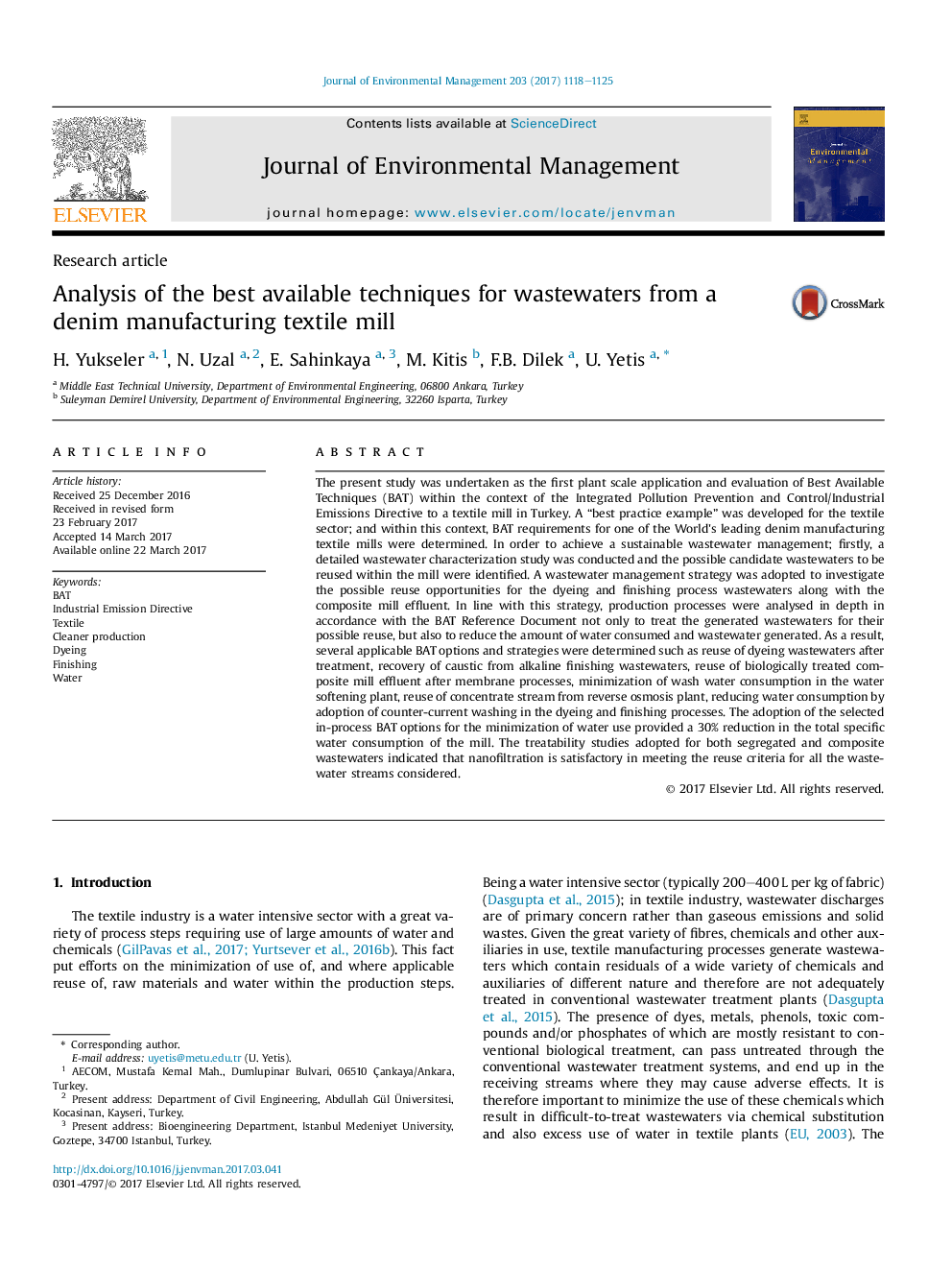| کد مقاله | کد نشریه | سال انتشار | مقاله انگلیسی | نسخه تمام متن |
|---|---|---|---|---|
| 5116388 | 1378095 | 2017 | 8 صفحه PDF | دانلود رایگان |
- First plant scale application of BAT to Turkish textile industry.
- Segregating effluents at source enables recycling/reuse application.
- Water consumption was reduced by 30% with the selected in-process BAT options.
- Nanofiltration is satisfactory in meeting the reuse criteria.
- A complete caustic recovery is possible with nanofiltration.
The present study was undertaken as the first plant scale application and evaluation of Best Available Techniques (BAT) within the context of the Integrated Pollution Prevention and Control/Industrial Emissions Directive to a textile mill in Turkey. A “best practice example” was developed for the textile sector; and within this context, BAT requirements for one of the World's leading denim manufacturing textile mills were determined. In order to achieve a sustainable wastewater management; firstly, a detailed wastewater characterization study was conducted and the possible candidate wastewaters to be reused within the mill were identified. A wastewater management strategy was adopted to investigate the possible reuse opportunities for the dyeing and finishing process wastewaters along with the composite mill effluent. In line with this strategy, production processes were analysed in depth in accordance with the BAT Reference Document not only to treat the generated wastewaters for their possible reuse, but also to reduce the amount of water consumed and wastewater generated. As a result, several applicable BAT options and strategies were determined such as reuse of dyeing wastewaters after treatment, recovery of caustic from alkaline finishing wastewaters, reuse of biologically treated composite mill effluent after membrane processes, minimization of wash water consumption in the water softening plant, reuse of concentrate stream from reverse osmosis plant, reducing water consumption by adoption of counter-current washing in the dyeing and finishing processes. The adoption of the selected in-process BAT options for the minimization of water use provided a 30% reduction in the total specific water consumption of the mill. The treatability studies adopted for both segregated and composite wastewaters indicated that nanofiltration is satisfactory in meeting the reuse criteria for all the wastewater streams considered.
Journal: Journal of Environmental Management - Volume 203, Part 3, 1 December 2017, Pages 1118-1125
